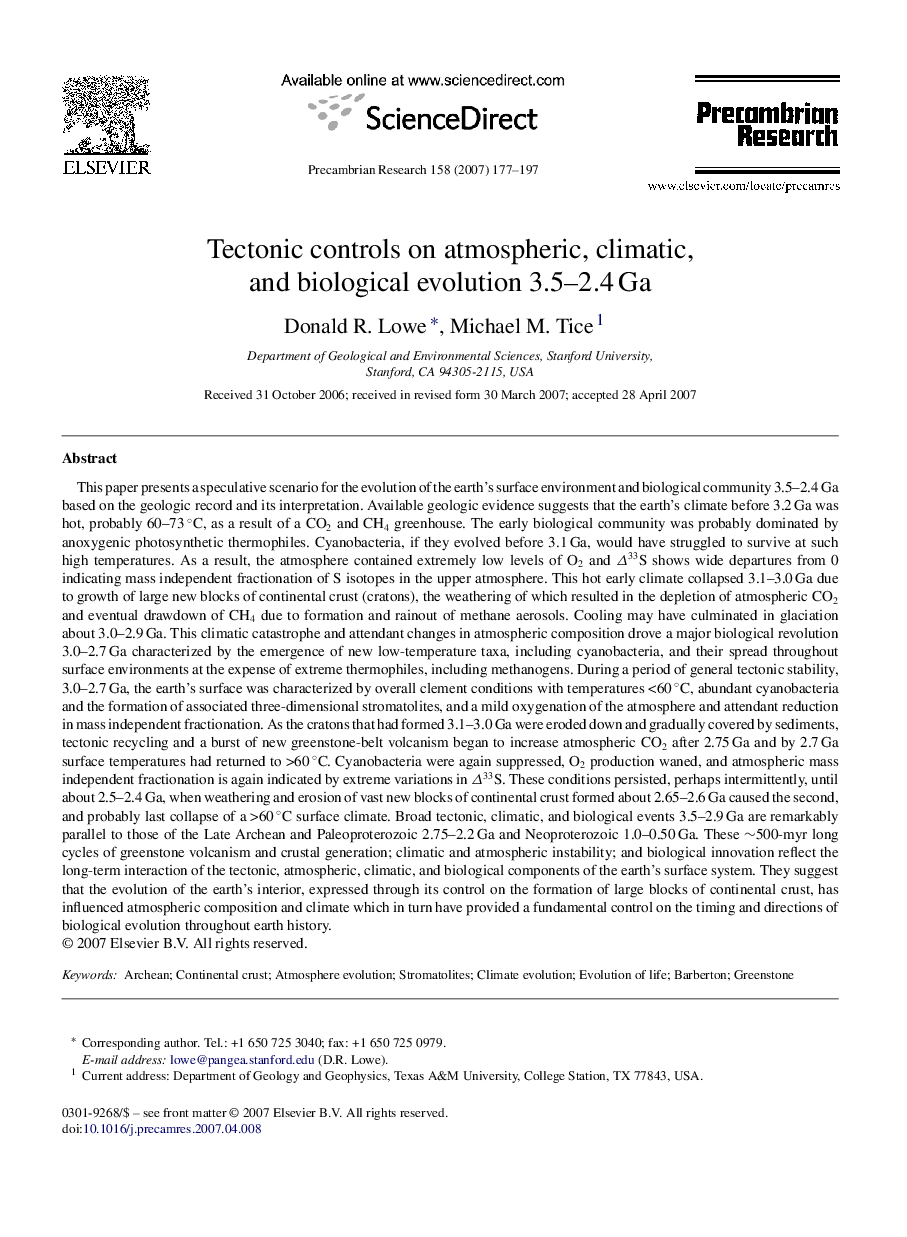| Article ID | Journal | Published Year | Pages | File Type |
|---|---|---|---|---|
| 4724350 | Precambrian Research | 2007 | 21 Pages |
This paper presents a speculative scenario for the evolution of the earth's surface environment and biological community 3.5–2.4 Ga based on the geologic record and its interpretation. Available geologic evidence suggests that the earth's climate before 3.2 Ga was hot, probably 60–73 °C, as a result of a CO2 and CH4 greenhouse. The early biological community was probably dominated by anoxygenic photosynthetic thermophiles. Cyanobacteria, if they evolved before 3.1 Ga, would have struggled to survive at such high temperatures. As a result, the atmosphere contained extremely low levels of O2 and Δ33S shows wide departures from 0 indicating mass independent fractionation of S isotopes in the upper atmosphere. This hot early climate collapsed 3.1–3.0 Ga due to growth of large new blocks of continental crust (cratons), the weathering of which resulted in the depletion of atmospheric CO2 and eventual drawdown of CH4 due to formation and rainout of methane aerosols. Cooling may have culminated in glaciation about 3.0–2.9 Ga. This climatic catastrophe and attendant changes in atmospheric composition drove a major biological revolution 3.0–2.7 Ga characterized by the emergence of new low-temperature taxa, including cyanobacteria, and their spread throughout surface environments at the expense of extreme thermophiles, including methanogens. During a period of general tectonic stability, 3.0–2.7 Ga, the earth's surface was characterized by overall clement conditions with temperatures <60 °C, abundant cyanobacteria and the formation of associated three-dimensional stromatolites, and a mild oxygenation of the atmosphere and attendant reduction in mass independent fractionation. As the cratons that had formed 3.1–3.0 Ga were eroded down and gradually covered by sediments, tectonic recycling and a burst of new greenstone-belt volcanism began to increase atmospheric CO2 after 2.75 Ga and by 2.7 Ga surface temperatures had returned to >60 °C. Cyanobacteria were again suppressed, O2 production waned, and atmospheric mass independent fractionation is again indicated by extreme variations in Δ33S. These conditions persisted, perhaps intermittently, until about 2.5–2.4 Ga, when weathering and erosion of vast new blocks of continental crust formed about 2.65–2.6 Ga caused the second, and probably last collapse of a >60 °C surface climate. Broad tectonic, climatic, and biological events 3.5–2.9 Ga are remarkably parallel to those of the Late Archean and Paleoproterozoic 2.75–2.2 Ga and Neoproterozoic 1.0–0.50 Ga. These ∼500-myr long cycles of greenstone volcanism and crustal generation; climatic and atmospheric instability; and biological innovation reflect the long-term interaction of the tectonic, atmospheric, climatic, and biological components of the earth's surface system. They suggest that the evolution of the earth's interior, expressed through its control on the formation of large blocks of continental crust, has influenced atmospheric composition and climate which in turn have provided a fundamental control on the timing and directions of biological evolution throughout earth history.
